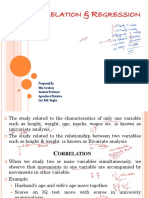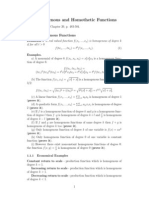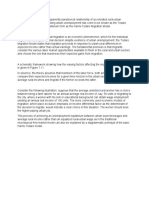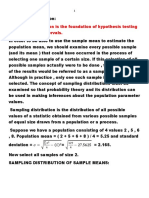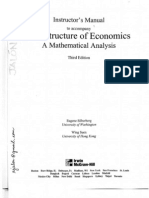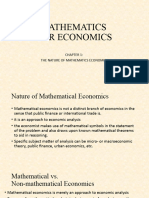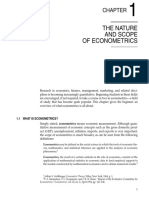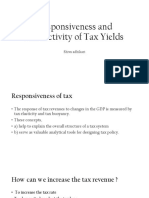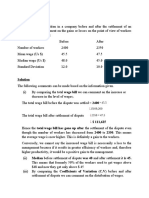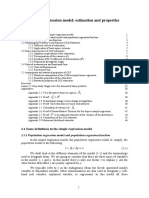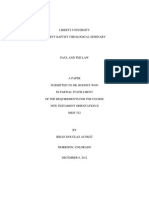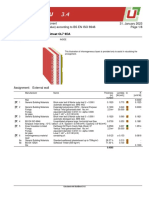0% found this document useful (0 votes)
562 views69 pagesLecture 2 - Regression Model PDF
The document summarizes key aspects of linear regression models. It discusses:
1) Population regression functions (PRF) which show the relationship between variables for an entire population.
2) Sample regression functions (SRF) which are estimated based on samples from the population and aim to closely estimate the PRF.
3) The Ordinary Least Squares (OLS) method which chooses parameter estimates for the SRF to minimize the sum of squared residuals, providing linear, unbiased, and efficient estimates.
Uploaded by
Dat NgoCopyright
© © All Rights Reserved
We take content rights seriously. If you suspect this is your content, claim it here.
Available Formats
Download as PDF, TXT or read online on Scribd
0% found this document useful (0 votes)
562 views69 pagesLecture 2 - Regression Model PDF
The document summarizes key aspects of linear regression models. It discusses:
1) Population regression functions (PRF) which show the relationship between variables for an entire population.
2) Sample regression functions (SRF) which are estimated based on samples from the population and aim to closely estimate the PRF.
3) The Ordinary Least Squares (OLS) method which chooses parameter estimates for the SRF to minimize the sum of squared residuals, providing linear, unbiased, and efficient estimates.
Uploaded by
Dat NgoCopyright
© © All Rights Reserved
We take content rights seriously. If you suspect this is your content, claim it here.
Available Formats
Download as PDF, TXT or read online on Scribd
/ 69








